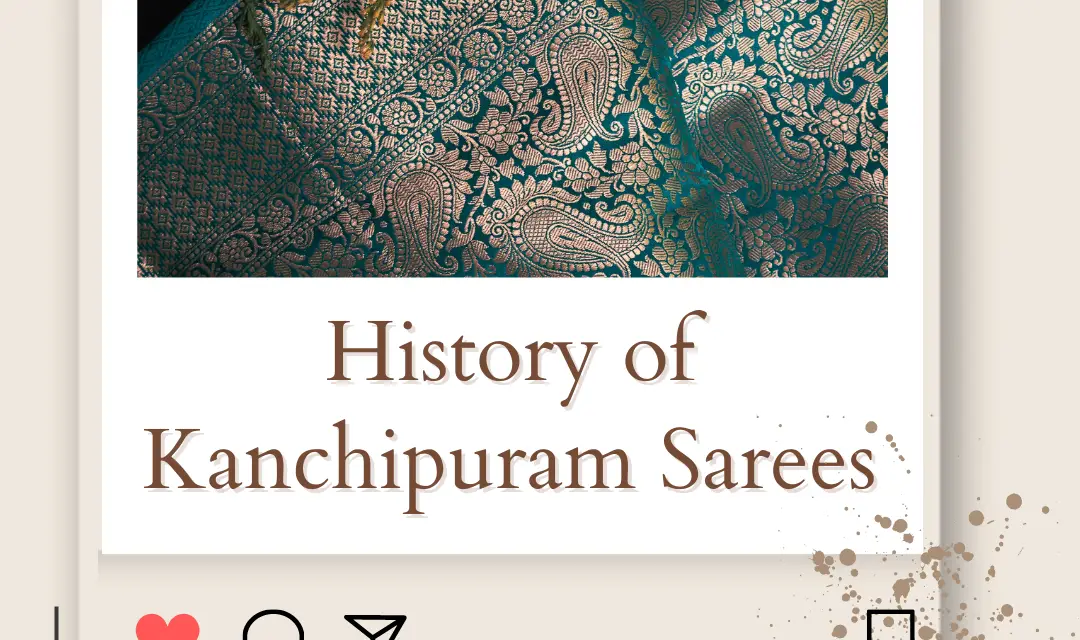History of Kanchipuram Sarees? also known as Kanjivaram sarees, are the true epitome of India’s rich cultural heritage. Hailing from the town of Kanchipuram in Tamil Nadu, these sarees have adorned women for centuries, becoming an emblem of traditional grace and opulence.
the history and artistry behind Kanchipuram sarees, exploring their origin, weaving techniques, and the enduring allure that continues to captivate saree enthusiasts worldwide.
Note: Always opt for Branded Saree & Branded Blouse & Branded Bras for a perfect Kanchipuram Saree outfit Combination.
Note: Measure your Kanchipuram Saree Size & know your Lingerie Size before buying any Kanchipuram Blouse Saree Online.
Types of Kanchipuram Sarees with Their Typical Lengths
| Type of Kanchipuram Saree | Length (in meters) |
|---|---|
| Traditional | 5.5 to 6.3 |
| Bridal | 5.5 to 9.0 |
| Temple Border | 5.5 to 6.3 |
| Korvai | 5.5 to 6.3 |
| Jacquard | 5.5 to 6.3 |
| Silk Cotton | 5.5 to 6.3 |
| Fancy Zari Work | 5.5 to 6.3 |
| Soft Silk | 5.5 to 6.3 |
| Heavy Zari Work | 5.5 to 6.3 |
| Half-Saree Style | 4.5 to 5.5 |
| Kanchipuram Silk | 4.5 to 5.5 |
| Designer | 5.5 to 6.3 |
Please Note: length may vary slightly
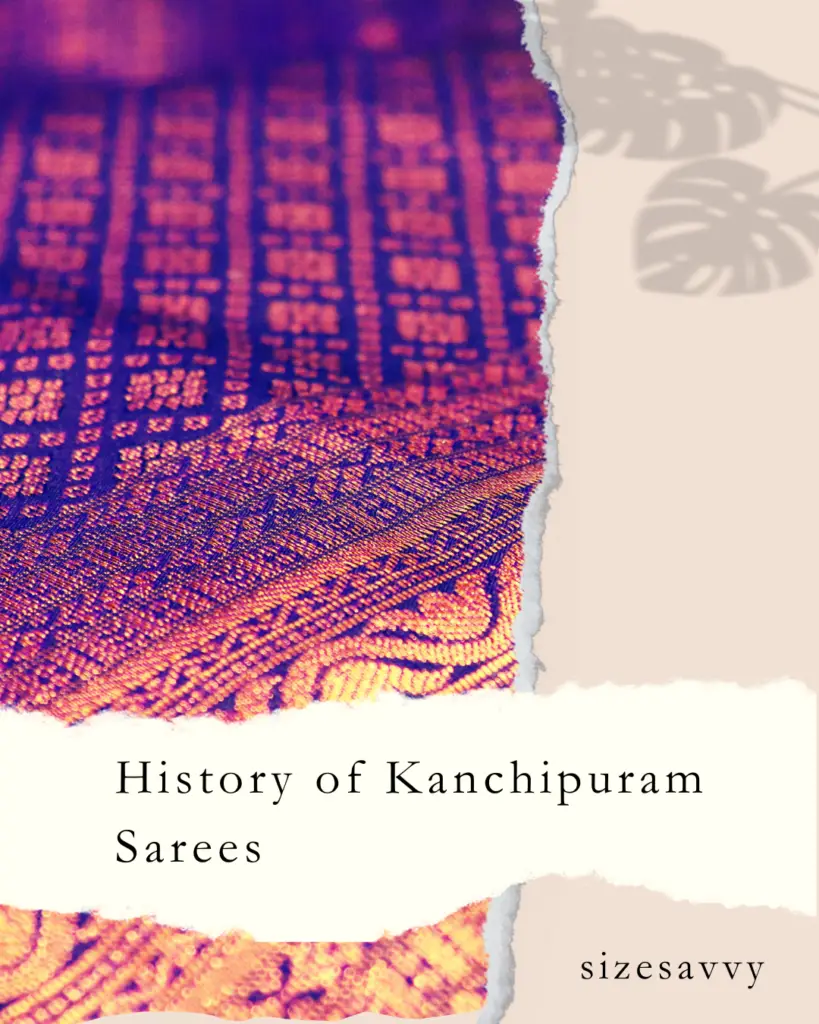
The Legend and Mythical Origins of Kanchipuram Sarees
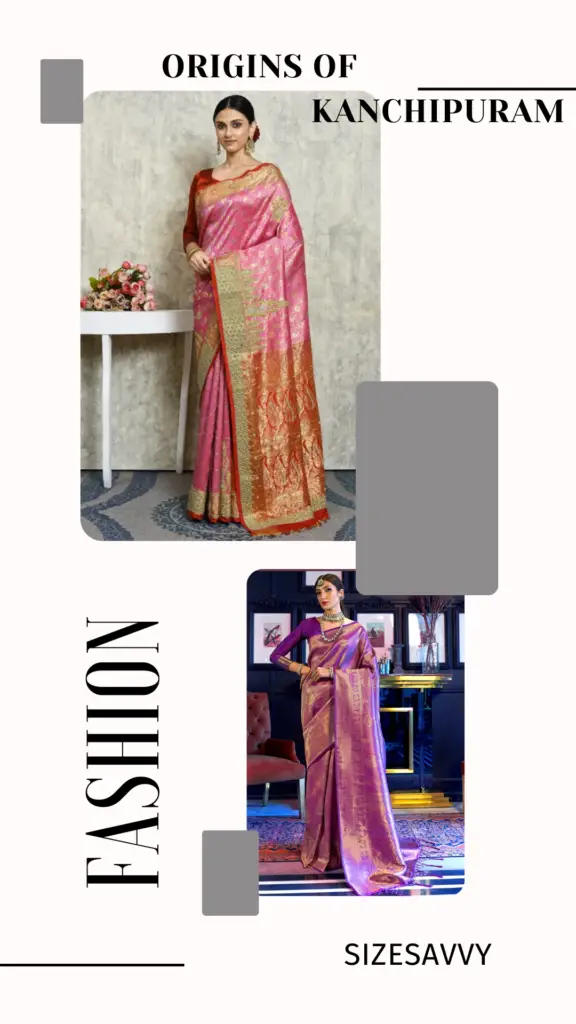
According to local lore, Kanchipuram sarees trace their origins to the celestial weavers of the heavens. The mythology narrates that Hindu deities weaved these sarees themselves, using pure mulberry silk gifted by the gods.
This divine connection adds a sacred significance to the silk used in crafting these masterpieces.
History of Kanchipuram Sarees (Heritage and Evolution)
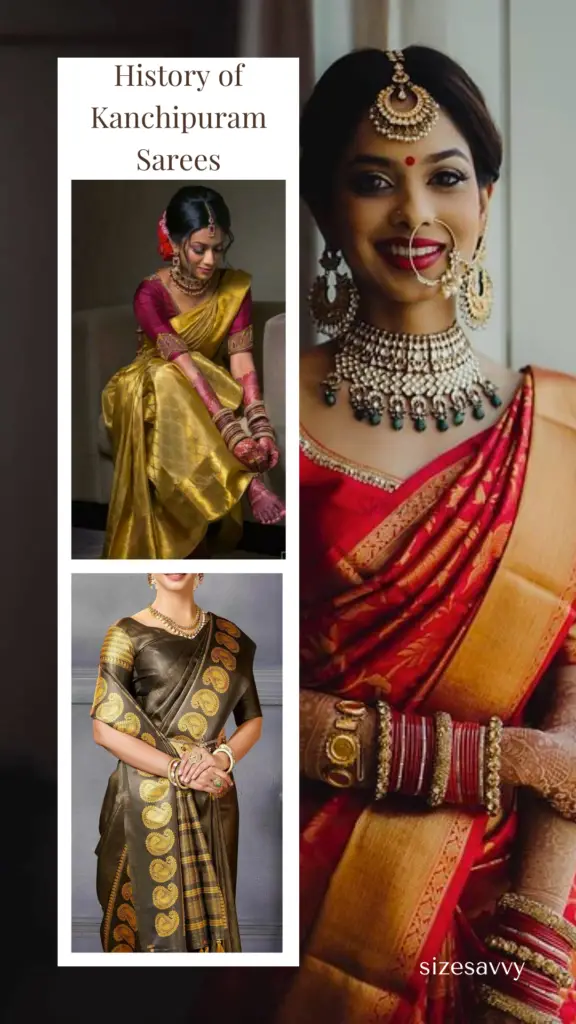
Kanchipuram sarees boast a heritage dating back to the illustrious Chola Dynasty, renowned for their patronage of art and craftsmanship. Later, the influence of the Vijayanagara Empire played a pivotal role in shaping the design aesthetics of these sarees.
Their importance in various South Indian rituals, weddings, and festivities has cemented their position as a cherished cultural treasure.
Weaving Techniques: The Artistry of Kanchipuram Sarees
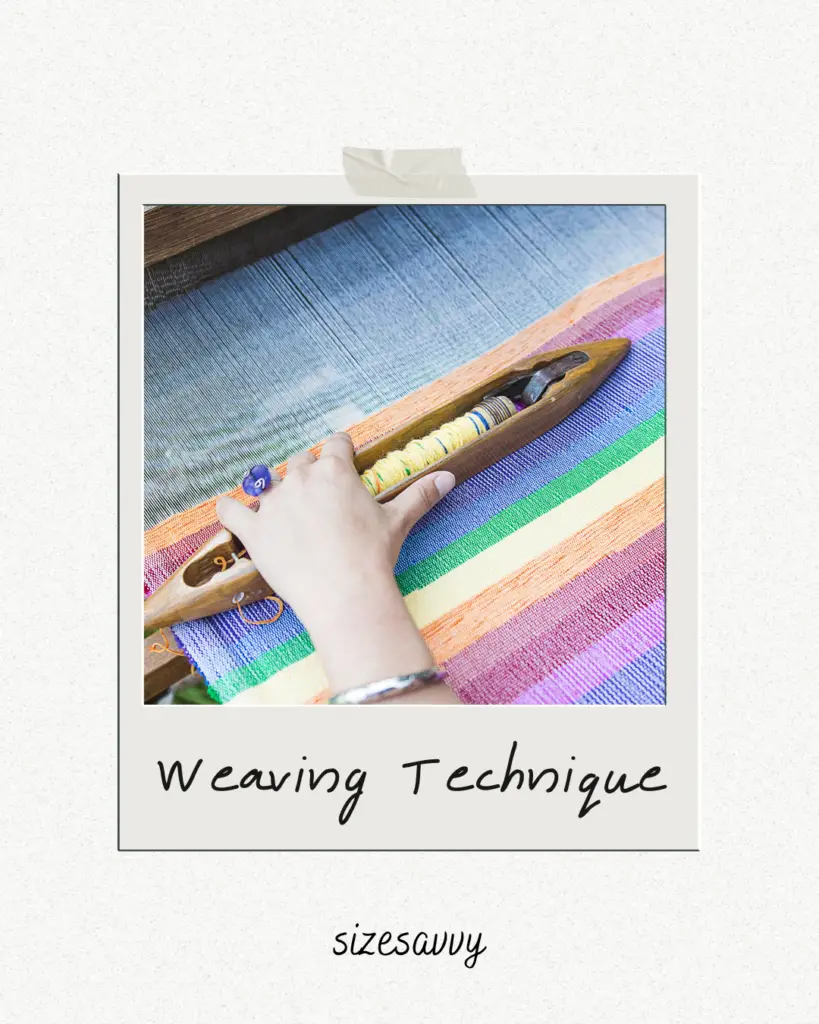
The meticulous weaving process sets Kanchipuram sarees apart. Skilled weavers use mulberry silk threads and employ traditional techniques to create intricate zari work. Fine gold or silver threads are woven into the saree, enhancing its grandeur and allure.
One of the defining features of Kanchipuram sarees is the use of contrasting borders and pallu designs, contributing to their striking beauty.
Comparison of Kanchipuram Sarees vs Other Traditional Sarees
| Aspect | Kanchipuram Sarees | Banarasi Sarees | Paithani Sarees | Chanderi Sarees |
|---|---|---|---|---|
| Origin | Kanchipuram, TN | Varanasi, UP | Maharashtra | Madhya Pradesh |
| Silk Type | Pure Mulberry | Pure Silk | Pure Silk | Silk or Cotton |
| Weaving Technique | Heavy Zari Work | Brocade | Tapestry | Sheer Weave |
| Special Feature | Contrasting Borders | Intricate Motifs | Peacock Design | Lightweight |
| Occasions | Weddings, Festivals | Weddings | Festivals | Casual Wear |
Cherishing Kanchipuram Sarees
Kanchipuram sarees have seamlessly embraced modern ethnic fashion trends while preserving their traditional essence. From weddings to events, these sarees have a universal appeal, captivating the hearts of fashion enthusiasts globally.
Maintenance Tips for Kanchipuram Sarees
To preserve the luster and sheen of your Kanchipuram saree for generations, follow these essential tips:
- Store the saree in a clean, dry place away from direct sunlight.
- Wrap it in a soft, breathable fabric to prevent snagging and damage.
- Avoid using harsh chemicals for cleaning; opt for professional dry-cleaning instead.
How to Know if the Saree is Pure Kanchipuram?
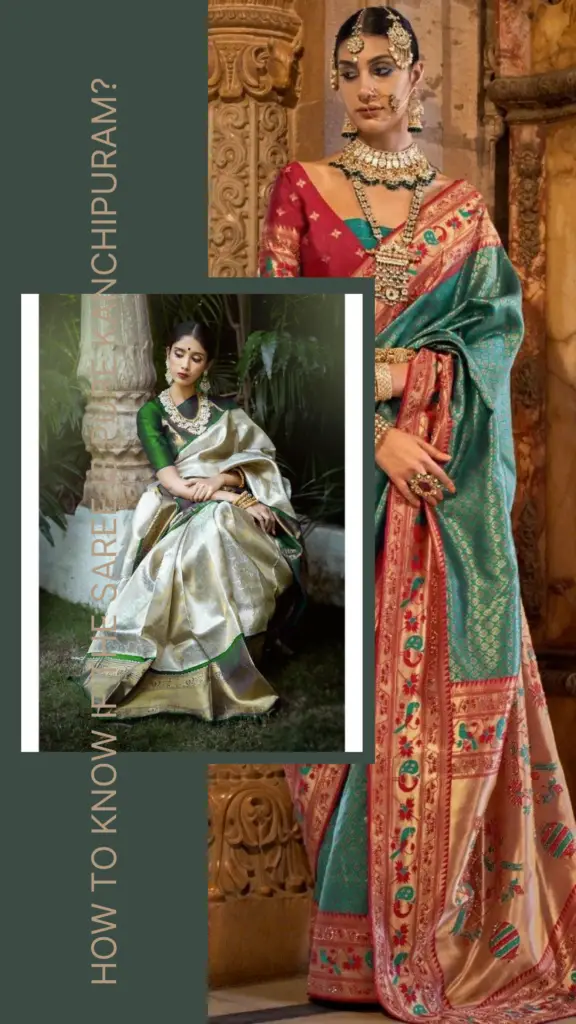
To determine if a saree is pure Kanchipuram, look for the following features:
- Authentic Kanchipuram sarees will have a distinct and heavy silk texture with a stiff drape.
- Check for intricate and elaborate zari work, typically made of gold or silver threads, woven into the saree’s borders and pallu.
- Look for a silk mark certification, which indicates the saree’s authenticity and purity.
- Traditional Kanchipuram sarees are handwoven, so minor irregularities in the design are normal and considered a hallmark of authenticity.
How Can You Tell a Real Kanjivaram Saree?
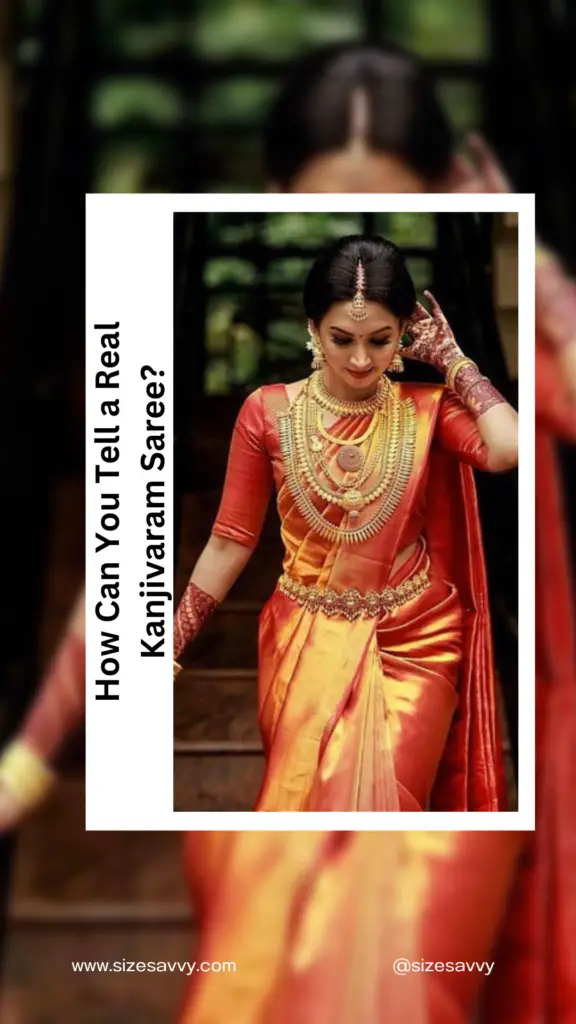
To identify a genuine Kanjivaram saree, consider the following aspects:
- Authentic Kanjivaram sarees are woven using pure silk threads, which contribute to their lustrous and luxurious Appearance.
- Look for intricate motifs and patterns that are handwoven using zari work made of real gold or silver threads.
- Check for a silk mark label or certificate that guarantees the saree’s authenticity.
- Genuine Kanjivaram sarees are generally more expensive due to the quality of saree materials and the craftsmanship involved.
Conclusion: The timeless elegance and heritage of Kanchipuram sarees make them a true treasure of India. Embracing a Kanchipuram saree is not just donning a garment; it is immersing oneself in centuries-old artistry and culture. From mythical tales to contemporary fashion, Kanchipuram sarees continue to captivate with their timeless allure and everlasting grace.
FAQs on Kanchipuram Sarees
Where do Kanchipuram sarees come from?
Kanchipuram sarees, also known as Kanjivaram sarees, originate from Kanchipuram, a town in the state of Tamil Nadu, India. This town is renowned for its rich tradition of handwoven silk sarees and is often referred to as the “Silk City” of India.
What is the history of the Kancheepuram saree?
The history of Kanchipuram sarees dates back to the 5th century when the Chola dynasty ruled the region. The art of silk weaving flourished during the reign of the Cholas and was further patronized by the Vijayanagara kings. Over the centuries, Kanchipuram sarees evolved into exquisite handwoven masterpieces, with intricate designs and rich zari work, becoming a symbol of luxury and elegance.
Who invented Kanchipuram silk sarees?
Kanchipuram silk sarees have a long and storied history, and it is difficult to attribute their invention to a single individual. The art of silk weaving in Kanchipuram has been passed down through generations of weavers, with each contributing to the refinement and innovation of the craft.
What is the history of Kanchipuram weavers?
The history of Kanchipuram weavers can be traced back to ancient times when skilled artisans migrated to Kanchipuram to practice the art of silk weaving. The Pallava dynasty and later the Chola and Vijayanagara dynasties played a significant role in nurturing the weaving community. Today, Kanchipuram weavers continue to preserve their age-old traditions and craftsmanship.
Where is the birthplace of the saree?
The origin of the saree is believed to be from the Indian subcontinent, with historical references dating back over 5,000 years. While there is no specific birthplace, the saree is deeply woven into the cultural heritage of India and is an integral part of the country’s diverse regional traditions.
Why is Kanchipuram’s saree stiff?
Kanchipuram sarees are known for their stiff texture, which is primarily due to the heavy and dense silk used in their weaving. The silk threads are tightly woven, and the sarees often feature intricate zari work, resulting in a stiffer drape compared to other silk sarees. The stiffness enhances the grandeur and durability of Kanchipuram sarees, making them perfect for special occasions.
What is the difference between Kanjivaram and Kanchipuram?
There is no difference between Kanjivaram and Kanchipuram sarees. Both terms refer to the same type of luxurious silk sarees that are handwoven in Kanchipuram, Tamil Nadu. “Kanjivaram” is the anglicized version of “Kanchipuram,” and both names are commonly used to describe these exquisite silk sarees.

